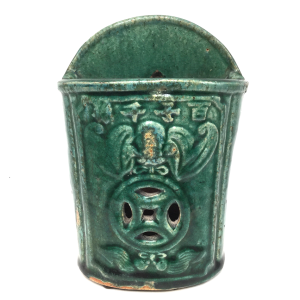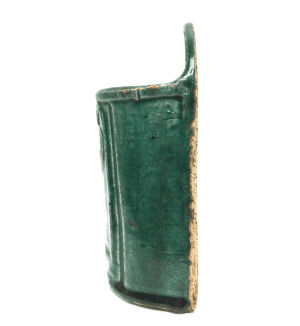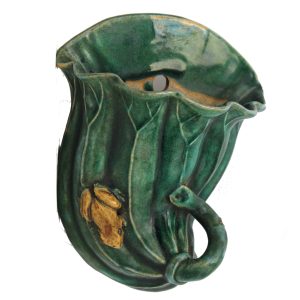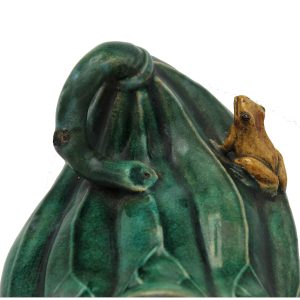Antique Shiwan Ware Wall Pocket Chopsticks Holder, China (16966A)
Original price was: $115.00.$95.00Current price is: $95.00.H: 7.375″ W: 5.125″ D: 2.5″ | FREE SHIPPING WITHIN CONTINENTAL U.S.
Chopsticks are ubiquitous in Chinese culture, and are often included in a bride’s dowry as a wish for a speedy arrival of many sons. This Shiwan ware green glazed wall pocket chopsticks holder has characters wishing for many sons and grandsons and an upside down bat holding a coin for “blessings in front of your eyes.”
Decorative utilitarian Shiwanware pieces are recognized for their fine modeling, vivid expression, and colorful apple-green and drip glazes. Chopsticks were commonly stored in wall pockets with a hole for mounting. Covered with auspicious symbols, they were often part of a bride’s dowry as “chopsticks” is a pun for “speedy arrival of sons.”




